14/n more generally, if similar principles apply to orientational dynamics in tissues remains to be seen. Comments most welcome. It was an exciting but a very long process, often made smoother and enjoyable by wonderful collaborators.
25.02.2025 23:40 — 👍 1 🔁 0 💬 0 📌 0
13/n it makes one think how various processes would be more robust if topological-which change discretely and are not susceptible to fluctuations of shape or size, typical of all living systems. Hopefully this work also brings some clarity to how the fly embryo stays so coordinated for a long time.
25.02.2025 23:40 — 👍 2 🔁 0 💬 1 📌 0

12/n The combination of these two ways of looking at this problem allowed us to establish the link between local topological charge and spindle tilt even further.
25.02.2025 23:40 — 👍 1 🔁 0 💬 1 📌 0


11/n Using the cell cycle mutants we could change the density of nuclear packing and show that spindle orientation (at a statistical level) does not depend on distance or density--making it scale invariant. Moreover, using the differences in Gaussian curvature we consolidated the link to topology.
25.02.2025 23:40 — 👍 1 🔁 0 💬 1 📌 0


10/n which links the torque to topology (num. of neighbors, topological charge=#neighbors -6) via a theorem in integral geometry. This is something we could verify from the data. It was a lucky coincident that I had started learning integral geometry in 2021 for (www.nature.com/articles/s41...)
25.02.2025 23:40 — 👍 2 🔁 0 💬 1 📌 0

9/n but how can these alignment effects persist as the asters and spindle push each other to migrate to the cortex. The mystery resolves if you use scaling arguments for total torque with respect to all neighbours. Factors of length scales start dropping off and your left with integral curvature
25.02.2025 23:40 — 👍 2 🔁 0 💬 1 📌 0


8/n At this point the only logical thing to look into was possible alignment effects coming out of dynamics of antiparallel microtubules at the aster-aster overlaps. For example the ones known to be present at the SPBs of yeast due to crosslinking. After some and math it seemed like a good idea.
25.02.2025 23:40 — 👍 2 🔁 0 💬 1 📌 0
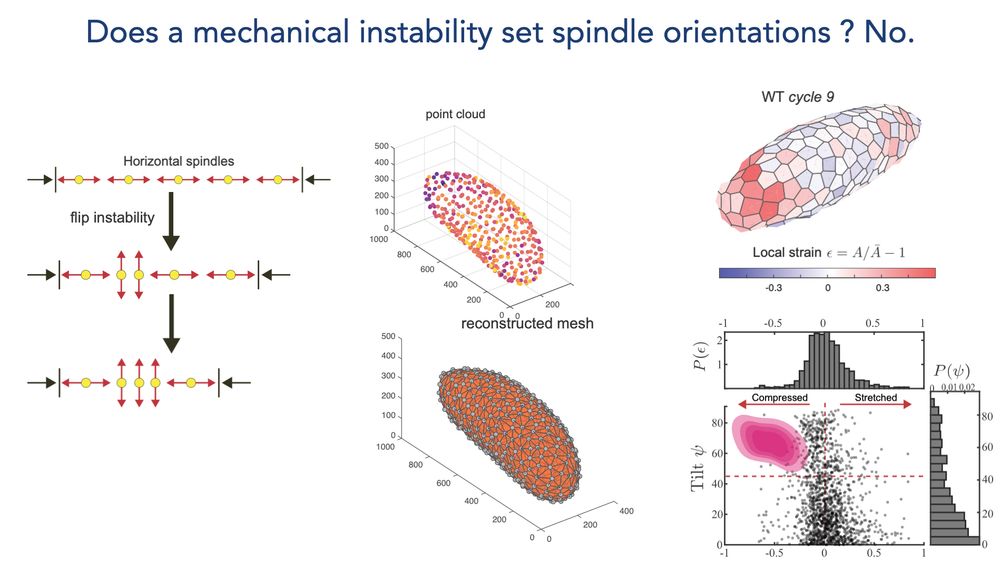
7/n Like many others we thought (mostly M. Vergassola), perhaps nuclear packing and pushing forces between different spindles (later important during cycle 10 onwards) could give rise to some sort of density dependent flip instability. But to @woonyunghur.bsky.social's and my surprise: No.
25.02.2025 23:40 — 👍 2 🔁 0 💬 1 📌 0
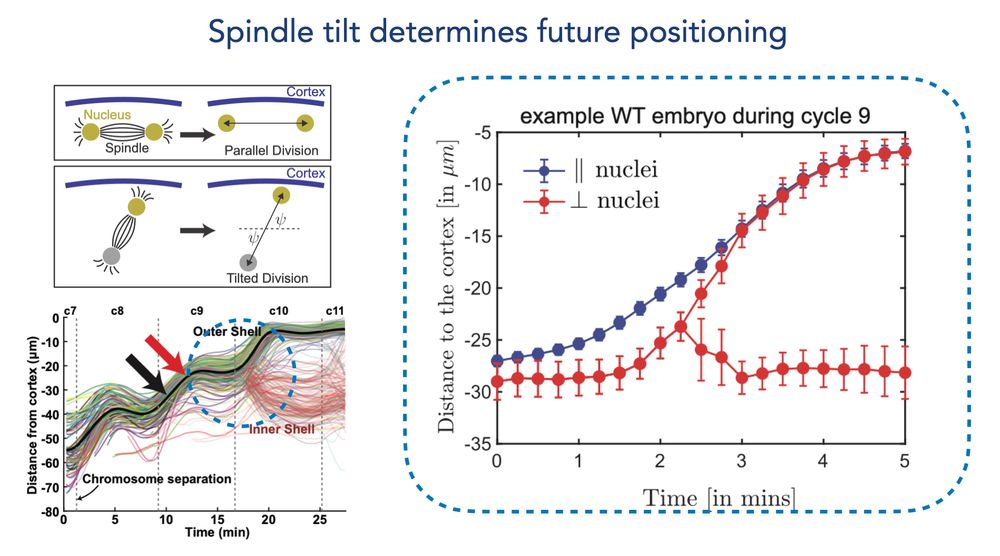
6/n So what determines which nuclei end up at the cortex of the egg giving rise to the beautiful little fly embryo that we know and love and which ones stay behind to make the yolk nuclei ?
The answer lies in the orientation of nuclear division (the primary driver of motion at this stage).
25.02.2025 23:40 — 👍 2 🔁 0 💬 1 📌 0
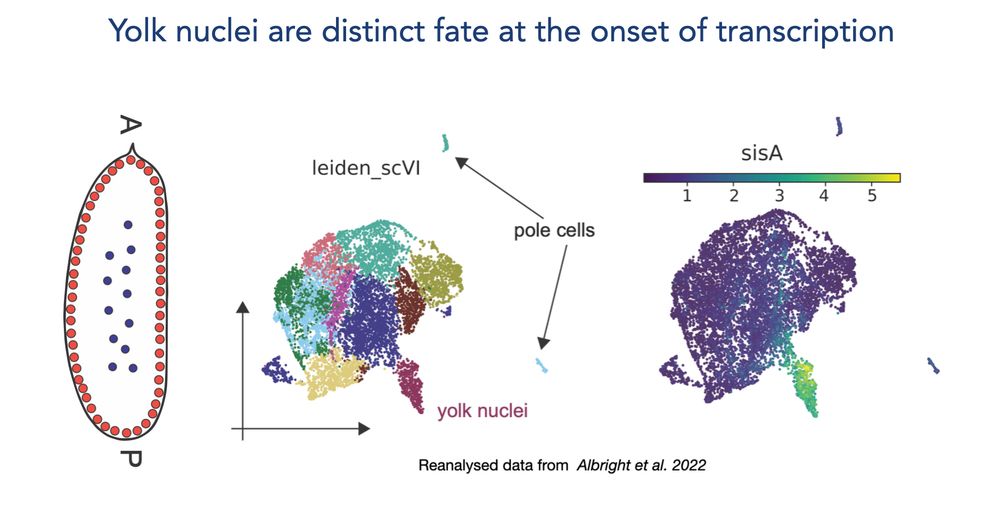
5/n In many ways this is the first fate decision at the fly embryo. Ziqi Lu looked into it by reanalysing some published data the MZT in the fly.
25.02.2025 23:40 — 👍 2 🔁 0 💬 1 📌 0
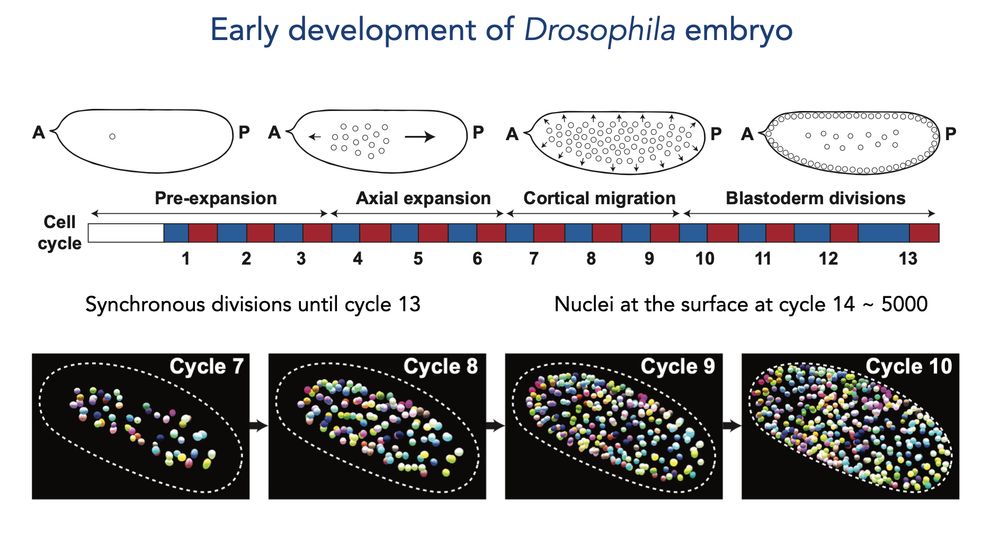
4/n majority of the fly embryo nuclei must travel from the center of the large embryo to the cortex to give rise to the future embryonic layer but some must stay behind to give rise to the yolk nuclei. @woonyunghur.bsky.social captured this with @npmitchell.bsky.social & @streichan.bsky.social
25.02.2025 23:40 — 👍 2 🔁 0 💬 1 📌 0
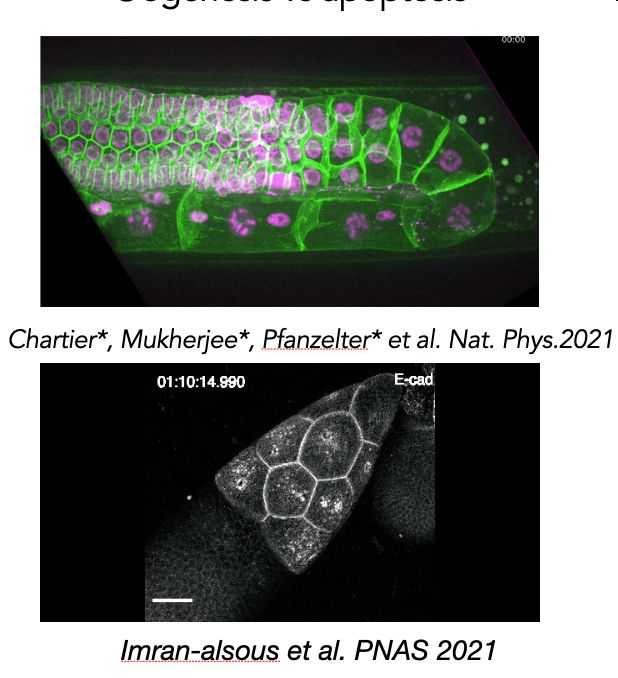
3/n As a physicist, how in the shared cytoplasm of a syncytial system biochemical identity of nuclei emerge has been always puzzling to me, starting even during my PhD @mpicbg.bsky.social (on C. elegans germline). Generically true for all germlines, slime mold, ashbya etc. Also for fly embryo
25.02.2025 23:40 — 👍 4 🔁 0 💬 1 📌 0
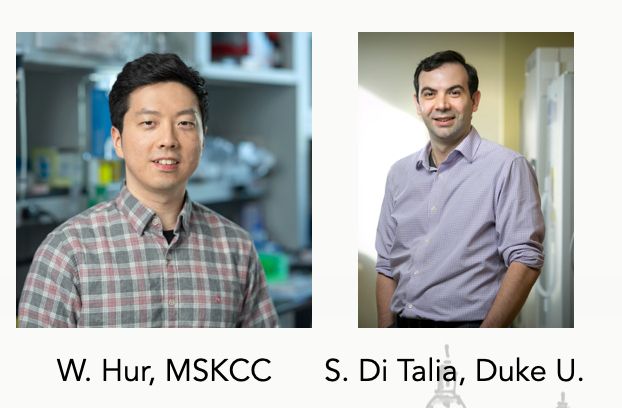
2/n It was very exciting theory-driven analysis and cutting age imaging experiment ( @woonyunghur.bsky.social during his time in the lab of @ditalialab.bsky.social ) collaboration across the atlantic between @qbio-ens.bsky.social (M.Vergassola)and @dukepress.bsky.social
25.02.2025 23:40 — 👍 3 🔁 0 💬 1 📌 0
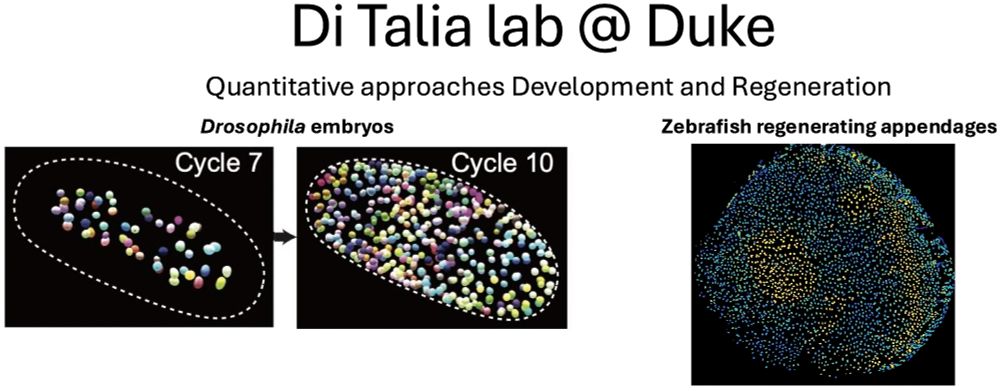
Please spread the word!
We are looking for postdoc(s) interested in quantitative problems in Development and Regeneration. Previous experience in quantitative biology is not required. We will support you and provide a great training environment if you are committed to learn new things.
12.12.2024 14:03 — 👍 58 🔁 48 💬 0 📌 3
PhD student @ MPI-PKS in Dresden
We study the cell nucleus and the tissue microenvironment, driving dynamic cell fate. Multiscale Bioengineering Lab at College of Engineering & Mathematical Sciences at the University of Vermont. mccreerylab.com
(Re)searcher of non equilibrium steady states living at the interface of physics and biology. Leading the Living Patterns lab @EPFL
https://www.epfl.ch/labs/lpl/
PhD student in Statistical Bioinformatics at University of Zurich and SIB | Currently visiting EMBL
Cell biologist driven by a passion for cell division
Biologist @hubrechtinstitute.bsky.social interested in signalling dynamics, development, tissue homeostasis and microfluidics | Formerly MPI Biochemistry, Biocenter Basel and Embl Heidelberg | Mother of 2 | Posts are my own.
Utrecht | sonnenlab.org
Professor at #EPFL - #RNAVelocity inventor - Laboratory of Brain Development and Biological Data Science. Single-cell and spatial biologist studying brain development and lipids. #ERCStg investigator
Part-time physicist-turned-biologist studying early embryos and the cell cycle @KU Leuven, full-time dad to two active boys. Visualizing academic data trends in Flanders.
www.gelenslab.org | https://academic-compass.be/en/
Engineering cells to understand their decisions
ESPOD Fellow @ebi.embl.org & @sangerinstitute.bsky.social
(Saez-Rodriguez & Parts)
lingering scientist @crick.ac.uk (Briscoe)
tries to make microscopes smarter · bioimage analysis, optogenetics, ml, 3d printing, open science · phd student in cellular signalling dynamics @PertzLab
Principal Investigator - Tata Memorial Centre - ACTREC, Mumbai, India
Developmental Biology & Disease mechanisms!
Decoding how the gut thinks 🦠🪱🧠💪
Neuroscientist with interests in
#EnergyMetabolism #EntericNeurons #Fats
@crick.ac.uk @institutducerveau.bsky.social
new PI @University of Sheffield -using mathematical models to understand living matter
https://www.sheffield.ac.uk/mps/people/all-academic-staff/mehmet-can-ucar
Physics Professor at Universitat de Barcelona. Research Group Leader at MPI-PKS and CSBD in Dresden. Theory of living matter. Collective phenomena in biology through the lens of active matter physics.
Cell and developmental biologist | Associate professor at LSU | Interested in epithelial morphogenesis, tube formation, cytoskeleton, apical ECM | she/her
https://faculty.lsu.edu/seyeonchunglab
Comparative developmental biology, regeneration, non-conventional model organisms, live imaging; see www.averof-lab.org
Group Leader @MPI-CBG and @POL, TU-Dresden. Dev Biologist mixing it up w/ Physics. Want to know how organs grow! also obsessed with structural colors | ritamateus.com
Chromosomophile, Cal alumna and faculty member, mom, AirBnBeekeeper, #Meiosis4Eva















